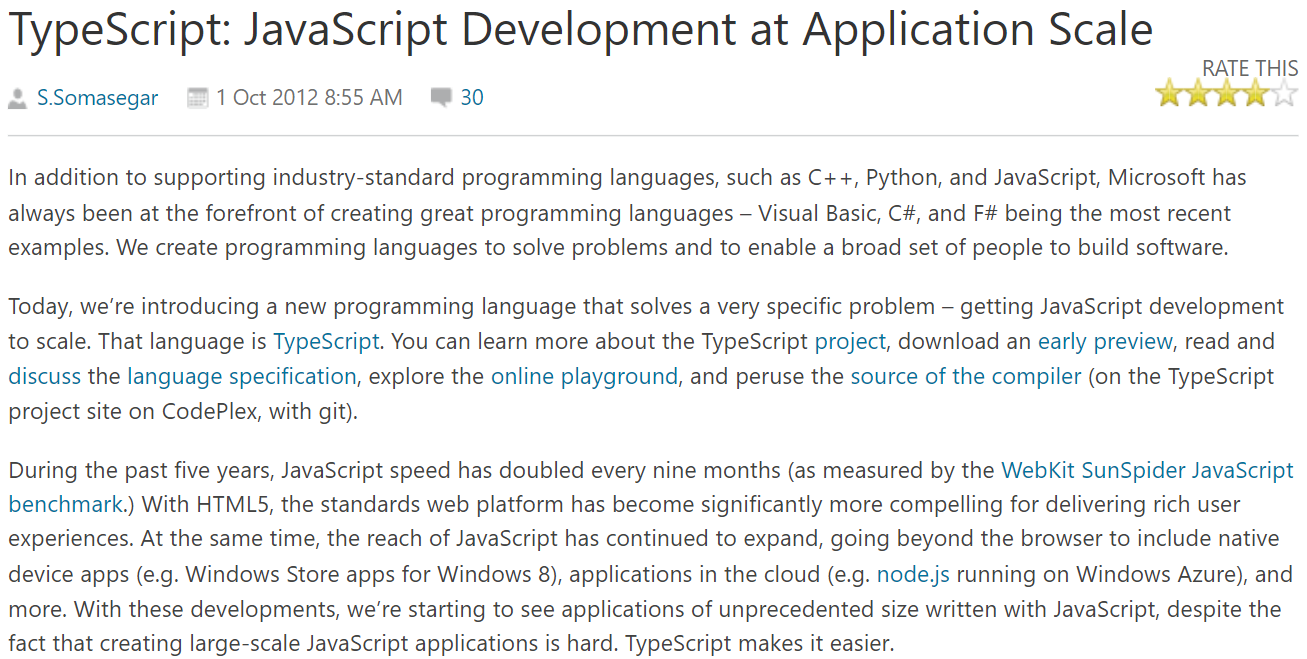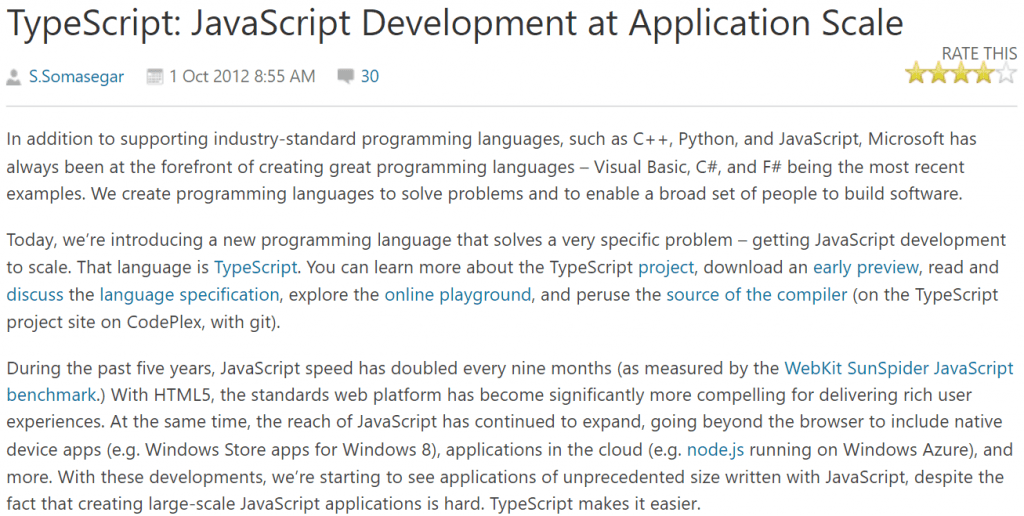TypeScript has been around for 10 years. 10 years ago – October 1, 2012, TypeScript first public appearance. Anders Hejlsberg, who led TypeScript development at the time, described TypeScript this way:
It is a typed superset of JavaScript that can be compiled into regular JavaScript. TypeScript can also greatly help increase productivity by enabling a rich tooling experience, while developers maintain existing code unchanged and continue to use their favorite JavaScript libraries.
TypeScript is a typed superset of JavaScript that compiles to idiomatic (normal) JavaScript, can dramatically improve your productivity by enabling rich tooling experiences, all while maintaining your existing code and continuing to use the same JavaScript libraries you already love.

Microsoft blogged back on the reviews TypeScript received when it first came out, and most people were skeptical, after all, for many JavaScript developers, trying to bring static typing into JavaScript was a joke—or evil conspiracy. Opponents say it’s a silly idea, arguing that strongly typed languages such as C#, Java, and C++ already exist that compile to JavaScript. They also complained that Anders Hejlsberg, who leads TypeScript development, has a “fascinated obsession” with static typing.
At the time, Microsoft realized that JavaScript would be used in countless scenarios in the future, and that their internal teams were facing huge challenges when dealing with complex JavaScript codebases, so they felt the need to create powerful tools to help write JavaScript – especially For large JavaScript projects. Based on this need, TypeScript has also determined its own positioning and characteristics, which is a superset of JavaScript, combining type checking and static analysis, explicit interfaces and best practices into a single language and compiler. By building on JavaScript, TypeScript is able to get closer to the target runtime while adding only the syntactic sugar needed to support large applications and large teams.
The team also insisted that TypeScript should be able to interact seamlessly with existing JavaScript, co-evolve with JavaScript, and look like JavaScript.
The first part of TypeScriptDesign goals:
- Does not add runtime overhead to existing programs
- Align with current and future ECMAScript proposals
- Preserves the runtime behavior of all JavaScript code
- Avoid adding expression-level syntax
- Use a consistent, fully erasable structured type system
- …
These goals guide the direction of TypeScript: focus on the type system, be a type checker for JavaScript, add only the syntax needed for type checking, and avoid adding new runtime syntax and behavior.
Microsoft mentioned that TypeScript has an important property that is inseparable from today’s prosperous ecosystem:open source. TypeScript was free and open source from the start —Both the language specification and the compiler are open source projects,And operate in a truly open way. In fact, Microsoft’s external posture at the time was not the “embracing open source” it is now, so they didn’t really understand how TypeScript’s open source helped it succeed. Therefore, some people believe that TypeScript has largely led Microsoft to start moving more towards open source.
Today, TypeScript is still actively developed and iteratively improved and used by millions of developers around the world. In many programming language rankings, indices or developer surveys, TypeScript consistently ranks at the top and is the most popular and used programming language.
#10th #Anniversary #TypeScript #News Fast Delivery
